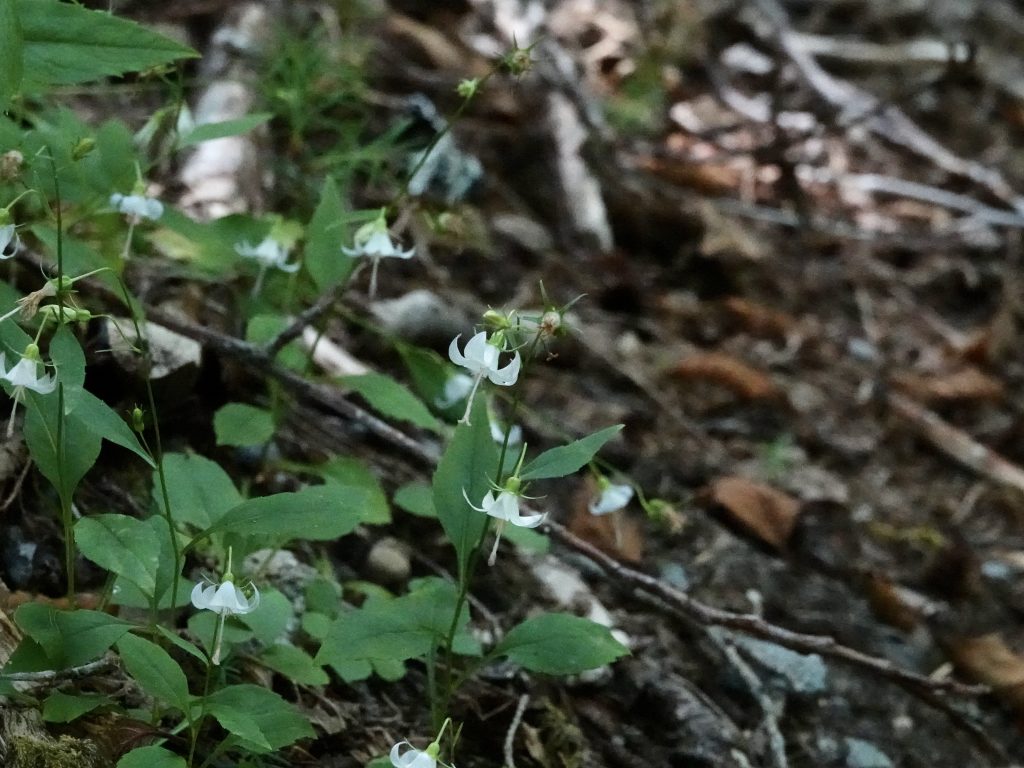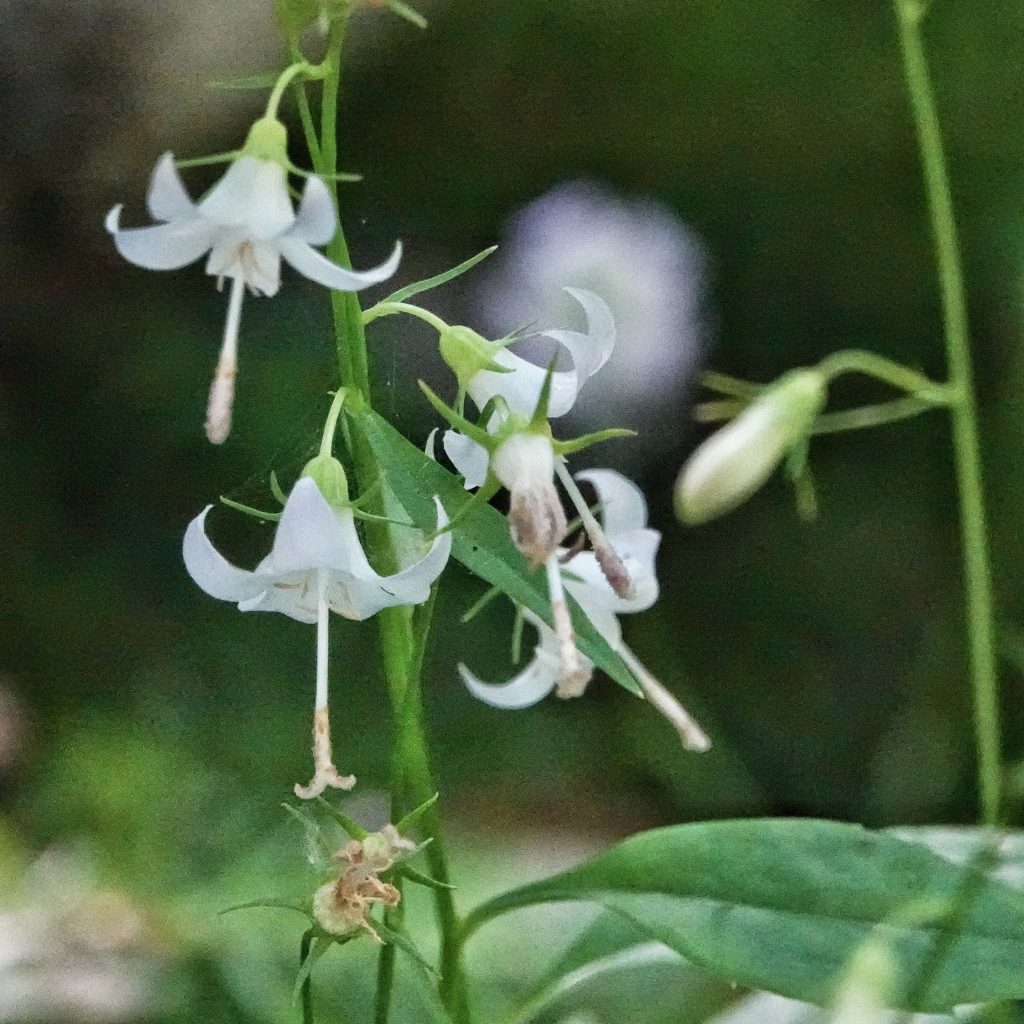
I almost missed this plant on the trip to McBride Lake. I was apparently tunnel visioned when I passed it on the trail in, and almost dismissed it as northern inside out flowers (Vancouveria hexandra) on my way back to the van. But then I noticed the leaves, which were oval and serrate, not at all like the duckfoot shaped leaves of inside out flowers. I had no idea what it was, so I pored over ‘Wildflowers of the Pacific Northwest’ (Turner/Gustafson; 2006) when I was back at the van eating lunch. But, except for the obviously incorrect inside out flowers, I couldn’t find anything with white, reflexed flowers and a very long style.
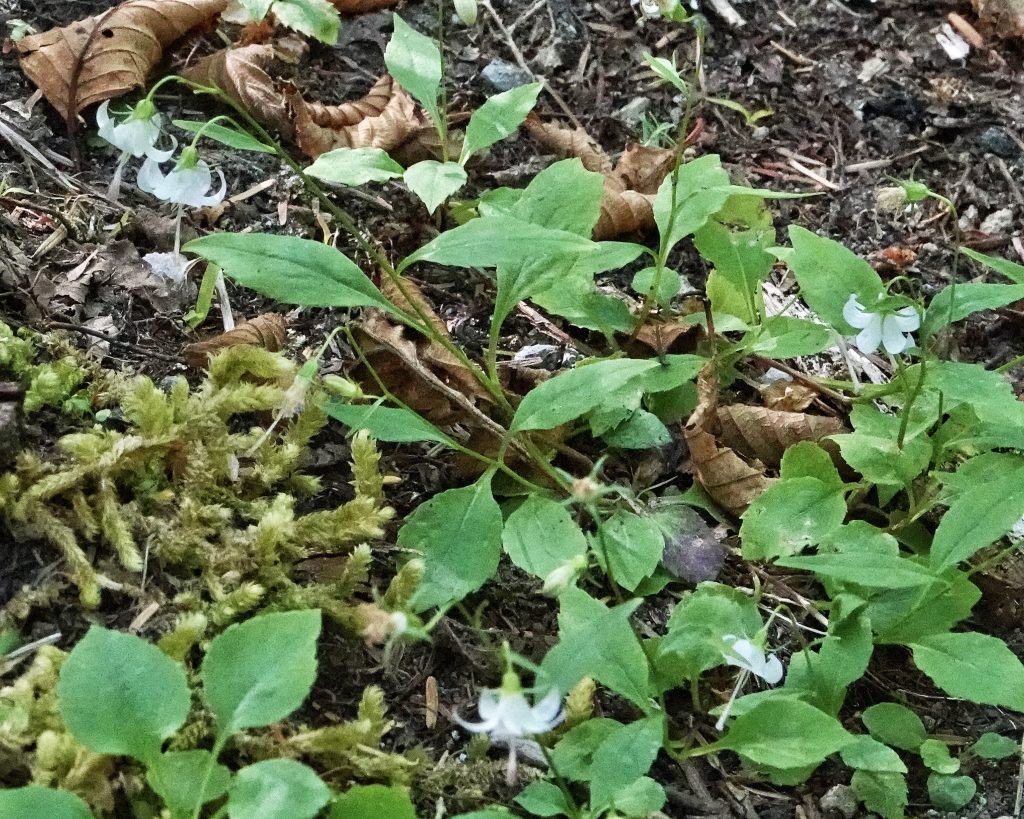
But, back at home that night with an internet connection, my Seek app bailed me out, suggesting this wildflower might be Scouler’s harebells (also known as Scouler’s bluebells, pale bellflower, and Scouler’s campanula). I immediately looked that up in Wildflowers of the PNW, and realized that must be it, but apparently it more frequently has bluish petals, because that was the section of the book where it was located. I was somewhat irritated with myself because I know not to get hung up on color, but because of the reflexed petals I probably wouldn’t have thought to look in the ‘5 petals joined into a bell’ subsection anyway.
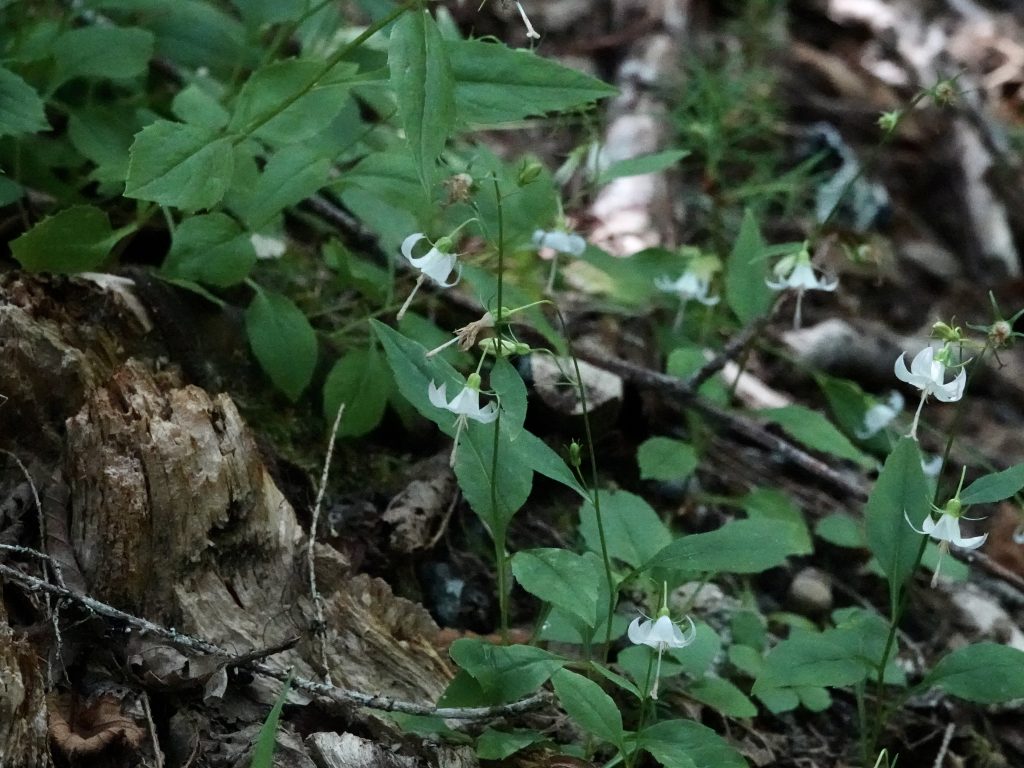
They say these beautiful wildflowers are uncommon, and to the best of my knowledge I hadn’t encountered Campanula scouleri before, although the fact that I passed it by once, and immediately misidentified it the second time, means I certainly could have missed it. Unlike its cousin Campanula rotundifolia, I can find no records of any ethnobotanical uses for Scouler’s harebells. They are members of the family Campanulaceae.
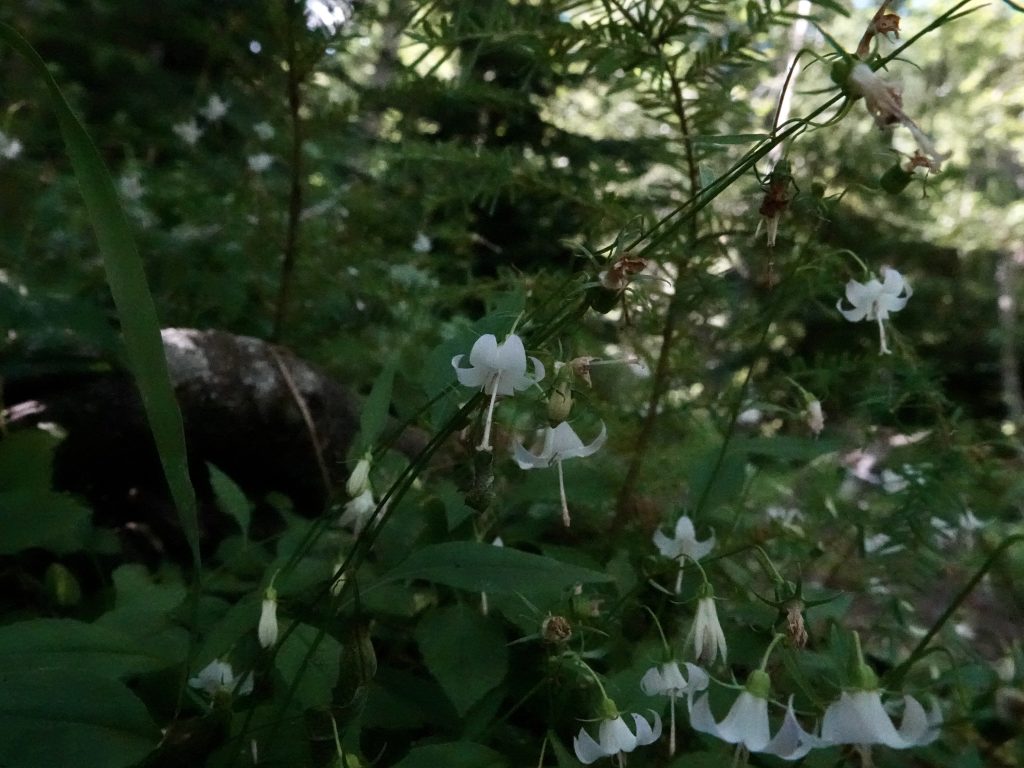
Description-Perennial; medium height (4-14” tall) plant growing in patches, with sprawling to erect stems, leaves on narrow winged petioles, and spreading to deeply reflexed flowers; leaves are oval, pointed, and serrate, both basal and on the stems; flowers are white to light blue, reflexed petals cut 2/3 of the way to the base, sepals spreading to reflexed, style much longer than the petals, and the same color.
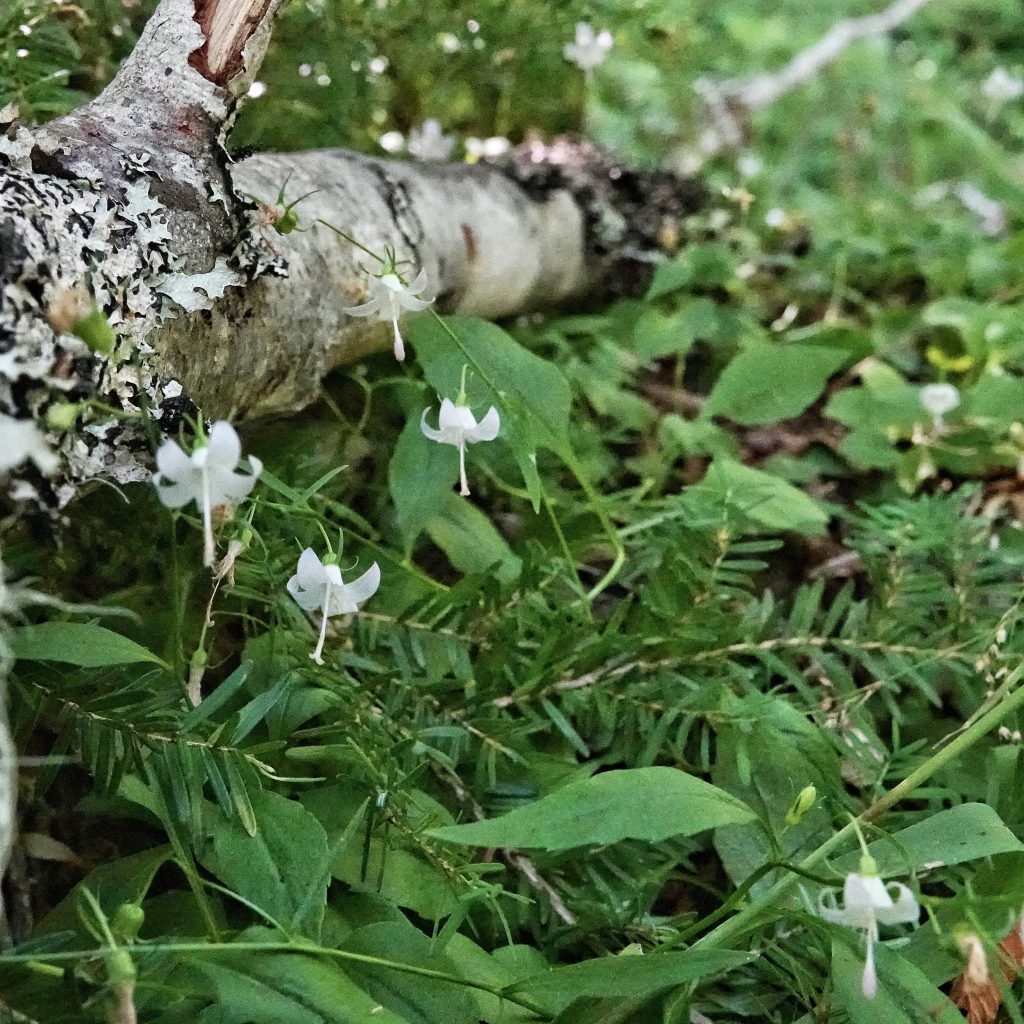
Similar species–Vancouveria hexandra (northern inside out flower) has lobed, duckfoot shaped leaves; Campanula prenanthoides has Corolla lobes cut nearly to the base and sessile or nearly sessile leaves; other Campanula do not have reflexed petals.
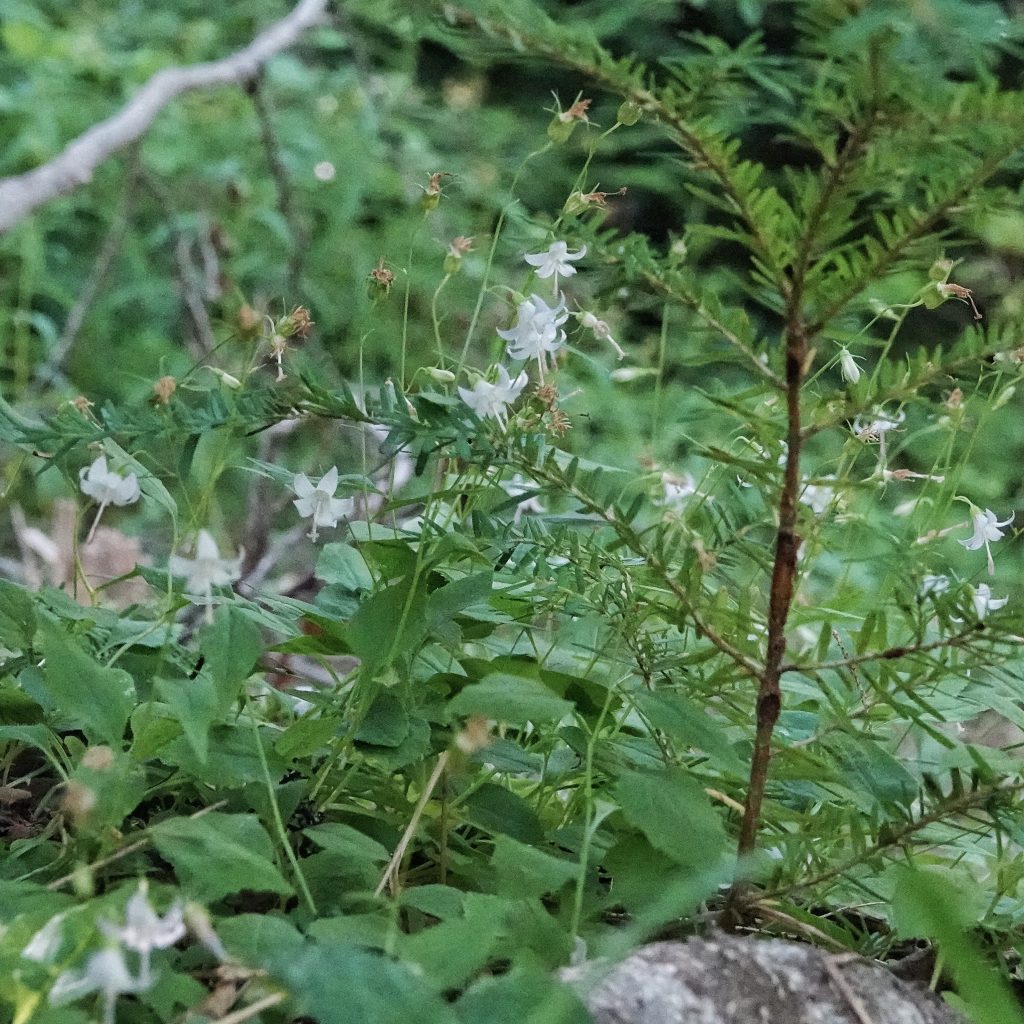
Habitat-Forest openings, shaded woodlands, cliffs, stream banks, roadsides, up to 5,700’ elevation.
Range-Native to Western North America; found in our region from the east slope of the Cascades (more common on the wet side) to the Pacific, with a disjunct population in nw Washington.
Reproductive timing-June into September
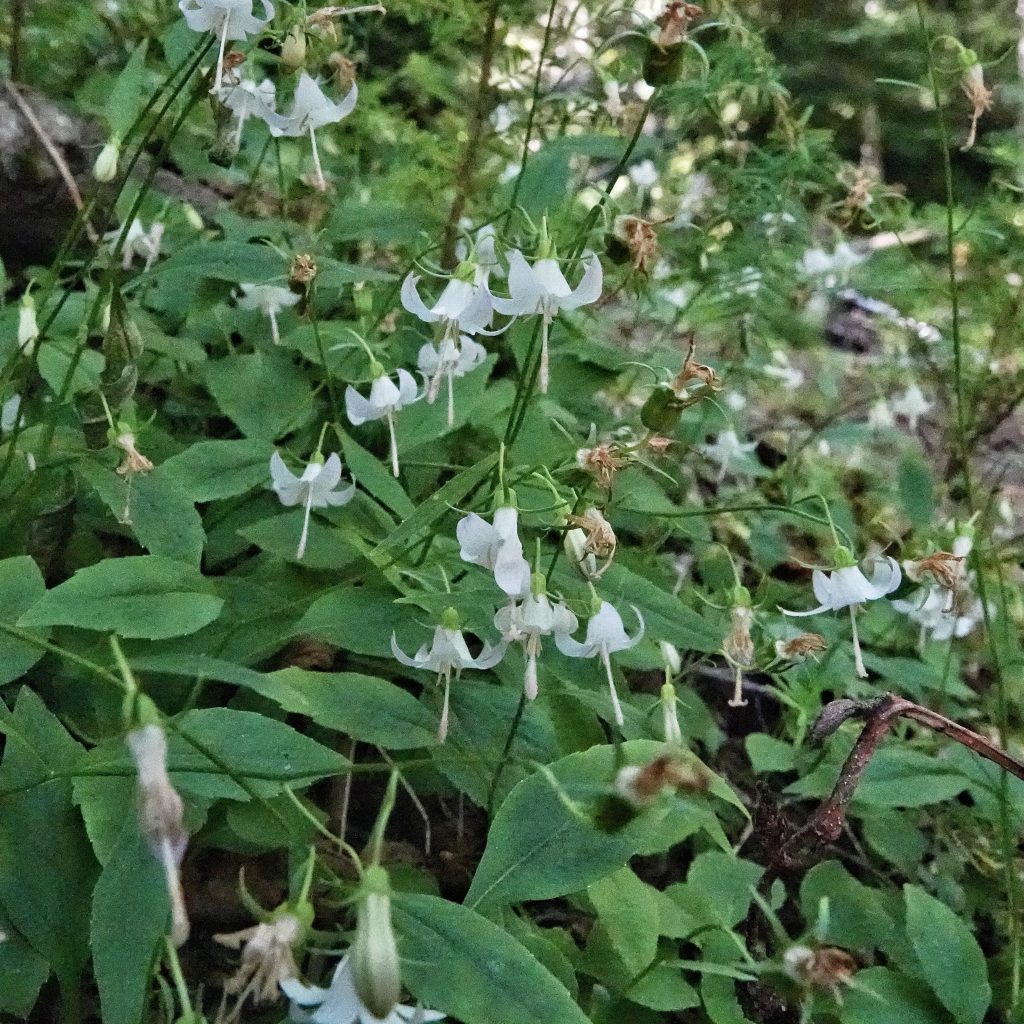
Eaten by-I can’t find much specific information on this uncommon plant, but it seems likely that it is utilized as a larval host by leaf mining flies in the genera Liriomyza and Ophiomyia, and leaf mining moths in the genus Marmara; adults of the beetle Lilioceris lilii are known to eat the leaves, but their larvae feed only on lilies; good source of nectar and pollen for bumble bees and other native, mostly solitary, bees, as well as for syrphid flies.
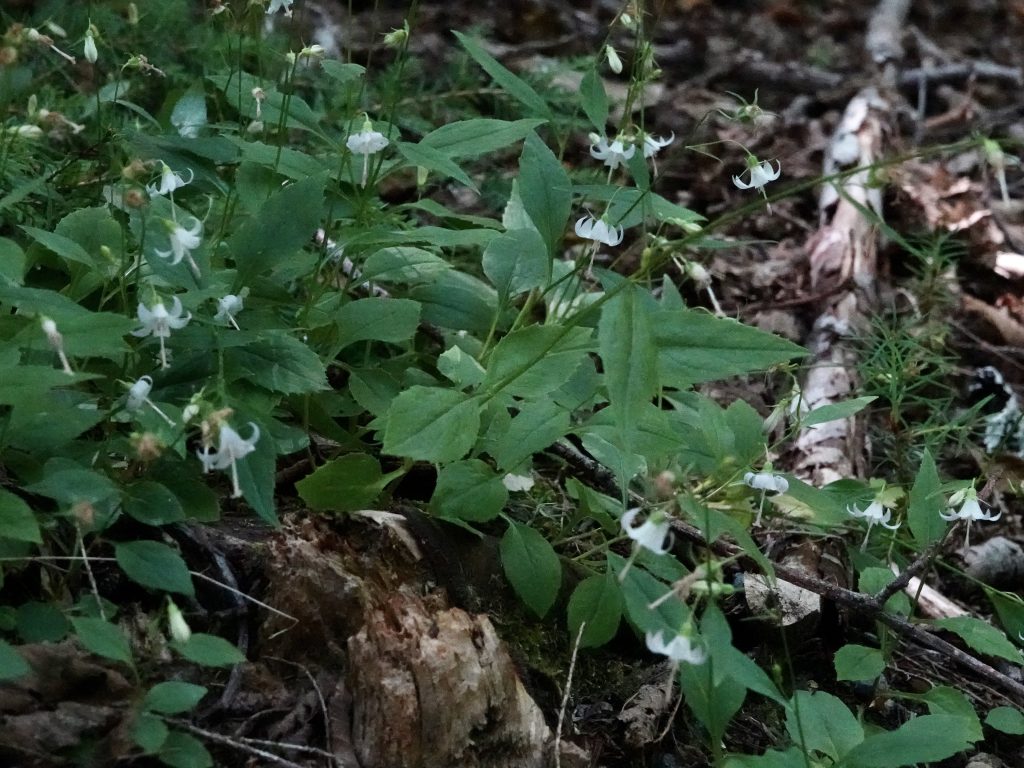
Etymology of names–Campanula is from the Latin for ‘little bell’, and refers to the shape of the flowers for most of the species in this genus. The specific epithet scouleri honors John Scouler (1804-1871) a Scottish naturalist who explored in the PNW, amongst other places, often in the company of David Douglas.
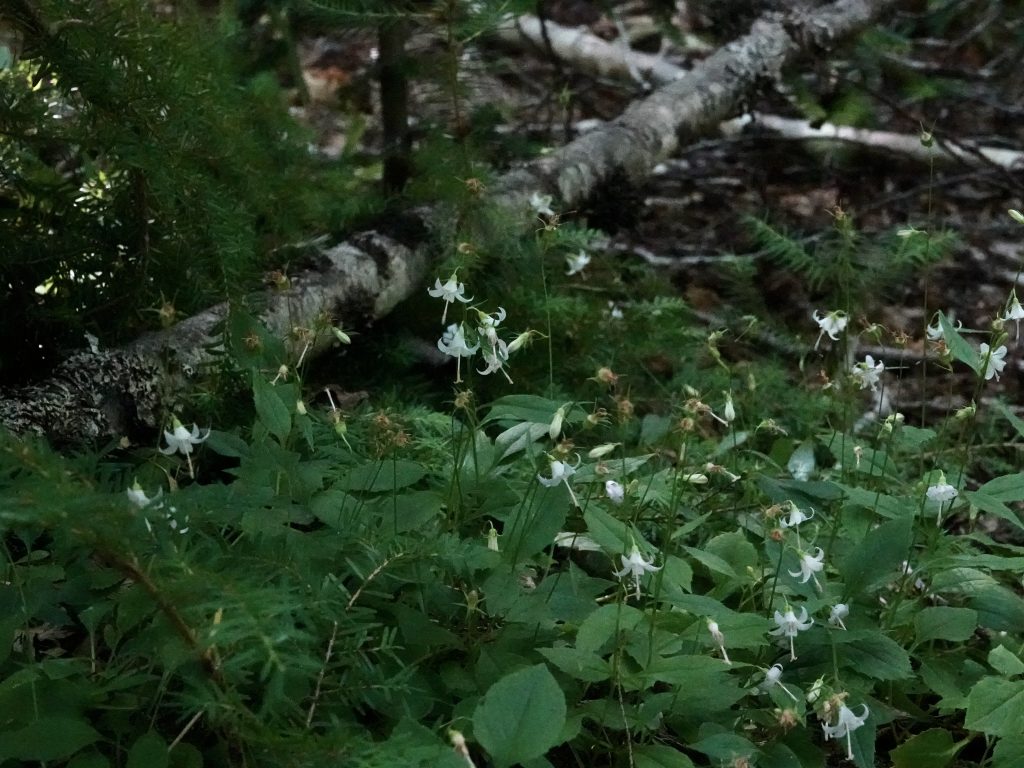
OregonFlora Campanula scouleri
Scouler’s Harebell, Scouler’s Campanula, Pale Bellflower: Campanula scouleri
Burke Herbarium Image Collection
https://en.wikipedia.org/wiki/John_Scouler
